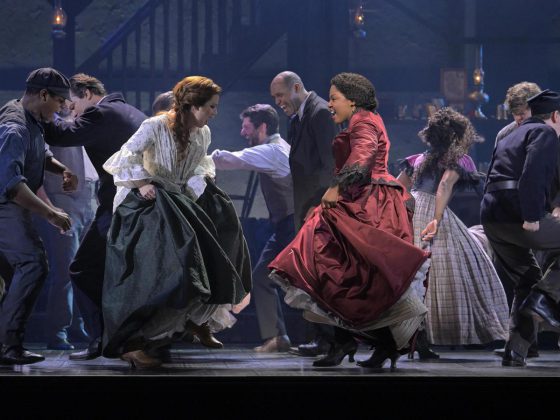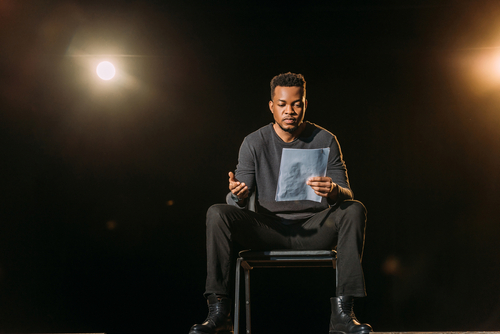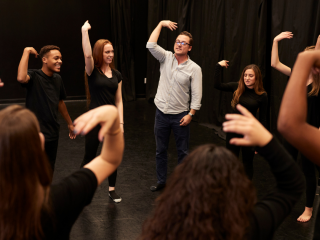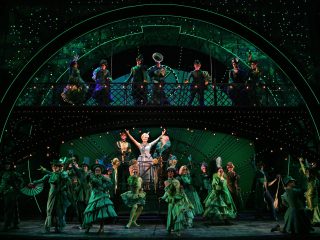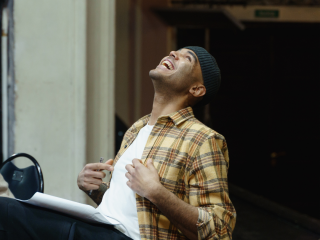Every year, I direct a middle school show that has no cuts. Which means that there is always at least one ensemble. And I like to think of myself as pretty good at making those roles feel lively and important and robust. I give students moments, I add in additional stage time, we do bits, they get laughs. I make sure they have plenty of attention and rehearsal time so that they understand that they are an important part of the process. I have rehearsals with just the ensemble, I have rehearsals with the full group. Over and over again, I give critical notes, notes of praise, and do my best to ensure that every member of the cast feels like a valued member of our group.
And yet…
Not one thing that I’ve done has stopped my students from cracking open the script on cast list day and counting how many lines they have. There are always a few students excited just to be cast, a majority who are disappointed they don’t have larger roles and a select few that have decided that they are unimportant to the show.
I can typically adjust the attitudes of the latter group, but there it takes a great deal of processing and work for my young people to see their work paying off and recognize it as valuable.
But in actuality, ensemble acting is an incredible skill-builder. This year especially, I’ve watched my ensemble students become significantly more skilled, confident and technically proficient performers. As I pause to reflect on what they’re gaining, I did some categorizing.
SKILLS WE GAIN FROM ENSEMBLE ACTING
CHARACTER CREATION
Without the script giving you a substantial basis for characterization, ensemble members have to work harder to craft fully realized characters. There’s a practice in invention that larger roles don’t often get. To have a fully realized, three-dimensional character with very few lines? That takes effort, creativity and care.
PHYSICAL STORYTELLING
With fewer lines to communicate their feelings, ensemble members have to become skilled physical actors whose body language and facial reactions help tell the story. Without clear physicality, they fade into the background.
ENGAGEMENT
Ensemble actors help the audience know how to feel. When they engage in the scene, we see ourselves reflected in them as watchers. An engaged ensemble can heighten otherwise lackluster moments. Nothing is worse than watching an actor in the ensemble zone out and disengage. It’s a practice in committing to the world of the play when it isn’t your line.
FINDING BALANCE
One has to navigate the line between overacting, stealing focus from important moments, and being disengaged. You begin to understand in what moments you are meant to be showcased vs. supporting. You leave with a good understanding of what each person is meant to contribute to every moment.
CREATING STAGE PICTURES
Ensemble actors have to work together and have kinesthetic awareness to build moments and pictures that don’t look sloppy! They become adept at ensuring that they are seen and understanding directorial blocking choices.
COLLABORATION
The ensemble is often a unit, having to work together to make sure that they are all in the same world, in the same style, functioning both individually and together. That’s collaborative art making right there: functioning both individually and together.
I’m in my second semester of the school year, working on our second production. And I’ve noticed that all of the actors who were in my ensemble for the last show are absolutely killing it when it comes to engagement, cues, listening and reacting. Every one of them gave stronger auditions than they did previously, and many gave stronger auditions than former leads. That’s because those who’ve been in the ensemble have a better understanding of their function within the play and the style of the play. They’ve had to develop characters with nothing to go on. They’ve had to find ways to be fascinating when they have less lines. And they are – fascinating.
It may be hard to convince a child (or adult for that matter) that being in the ensemble is an excellent opportunity. But never stop trying.



